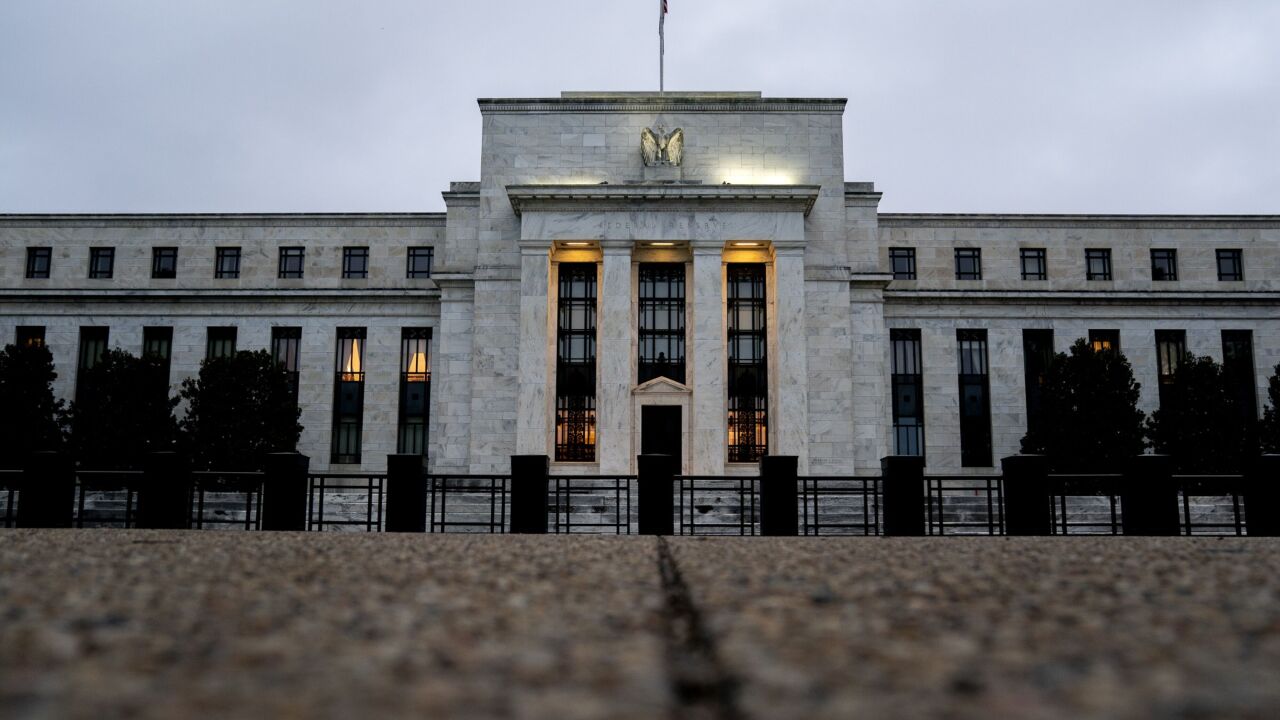Stablecoins
How are banks approaching dollar-backed digital assets (stablecoins)?
Stablecoins have moved from the edge of the
Banks are testing stablecoins for cross-border payments, liquidity management, and digital wallets. Some are also exploring how stablecoins can support interbank transactions or be issued directly by regulated institutions. As the landscape takes shape, stablecoins are starting to look less like an experiment and more like infrastructure.
-
Mastercard and Visa stepped back from their card partnerships with Binance Holdings, distancing themselves from the cryptocurrency platform that's under threat from regulators worldwide.
August 25 -
Congress must act to ban nonbanks from issuing stablecoins. The products are virtually equivalent to bank deposits, and should be regulated as such.
August 21 -
There is an urgent need for a new class of security solutions that will allow people to retain control of their decentralized financial lives with confidence and safety.
August 18Team8 -
"Smart" contracts enable the Chicago-based trust bank to carry out deals without intermediaries, while archiving details on transactions that can be useful later. Experts say other banks could follow despite the complexities of cutting-edge technology and the risk of being hacked.
August 10 -
The Federal Reserve issued fresh policy guidance around stablecoin issuance, distributed ledger technology and fintech partnerships. Legal and policy analysts anticipate a further chilling effect on bank engagement with so-called novel activities.
August 9 -
The Federal Reserve has outlined the process state member banks must follow before issuing, redeeming or holding stablecoins. The agency also says it will create an examination process to monitor novel activities.
August 8 -
The payment giant's entry into the stablecoin market is expected to renew the debate over the appropriate regulatory oversight for digital tokens. It could also have ripple effects in areas such as the debate over instant payments.
August 8
The first three months of the year coincide with the start of President Donald Trump's second term in office. Investors are likely to be more interested in banks' outlooks amid swings in tariff policy than the first-quarter results.
- September 16
- September 16
Frequently Asked Questions:
How are banks approaching dollar-backed digital assets (stablecoins)?
Stablecoins have moved from the edge of the crypto, world to the center of policy and banking conversations. As regulators and banks weigh their role in payments, settlement, and reserves, this page follows the developments — from early pilots to proposed legislation.
Banks are testing stablecoins for cross-border payments, liquidity management, and digital wallets. Some are also exploring how stablecoins can support interbank transactions or be issued directly by regulated institutions. As the landscape takes shape, stablecoins are starting to look less like an experiment and more like infrastructure.
Why are banks paying attention to stablecoins?
Stablecoins are increasingly viewed as a potential upgrade to legacy payments systems. Banks are evaluating them for settlement, remittances, cross-border transactions, and tokenized deposit models.Are banks issuing their own stablecoins?
Some are exploring the option. Institutions like JPMorgan (with JPM Coin) and new entrants like PayPal are piloting bank-issued stablecoins, while others are watching regulatory developments before moving forward.How do stablecoins impact compliance and risk?
Issues include KYC/AML enforcement, cybersecurity, operational risk, and how reserve assets are held and reported. Banks exploring stablecoin activity must weigh both technological benefits and regulatory scrutiny.How are regulators responding to stablecoin innovation?
Congress is debating stablecoin-specific bills focused on reserve backing, issuer licensing, and oversight. The Federal Reserve, OCC, and state regulators are also shaping how bank involvement in stablecoin activity is supervised.How are banks using stablecoin?
Banks are using stablecoins to speed up cross-border payments, manage liquidity across global branches in real time, and test new forms of settlement between institutions. Some are integrating stablecoins into retail-facing digital wallets, while others are exploring interbank networks built on tokenized payments. These efforts are less about crypto speculation and more about making money move faster, with greater transparency and fewer intermediaries.- Real-time cross-border payments
- Internal liquidity management
- Retail-facing digital wallets
- Interbank tokenized payment networks
Top banks investing in stablecoin
List of institutions with greatest investment in stablecoin:- JPMorgan Chase – JPM Coin
- Custodia Bank – Avit Tokens
- Citigroup - Citi Token Services
- Societe Generale - USD CoinVertible
- Bank of America - Name yet to be released
- Fifth Third - Name yet to be released
- U.S. Bancorp - Name yet to be released







